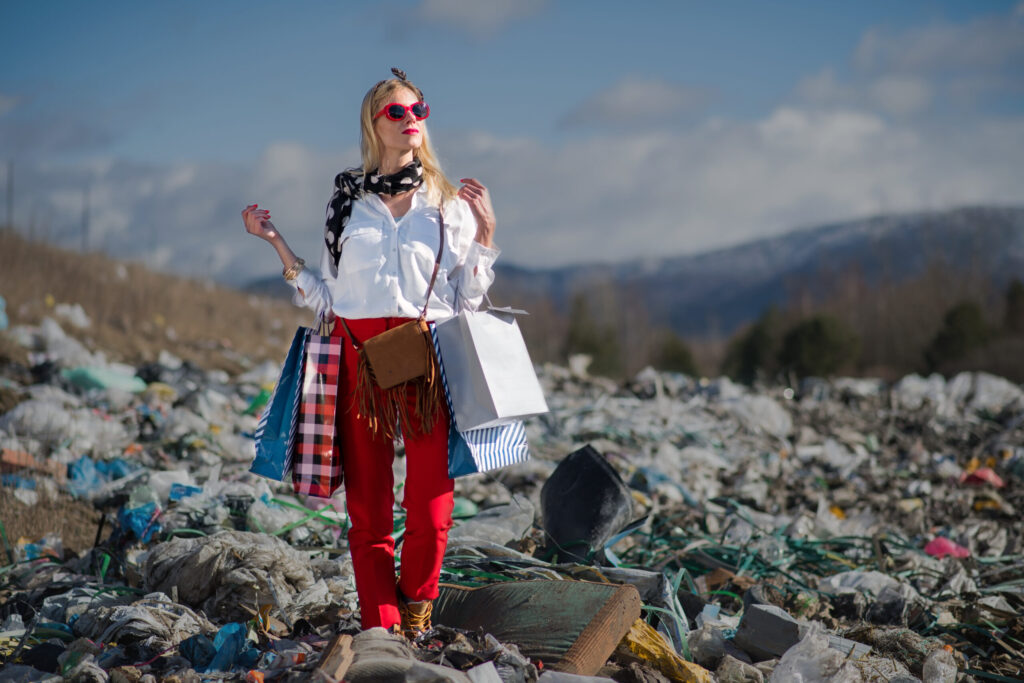In recent years, the fashion industry has witnessed a significant shift as fast fashion’s decline paves the way for the rise of slow fashion. This transformation is not merely a trend; it reflects a growing awareness of the environmental and ethical implications of our clothing choices. As consumers become more conscious of sustainability, the demand for quality over quantity is reshaping the landscape of fashion. In this article, we will delve into the factors contributing to the decline of fast fashion and explore how slow fashion is emerging as a viable alternative.
As we navigate through this topic, you will learn about the detrimental effects of fast fashion on the environment, including waste generation and resource depletion. We will also discuss the social implications, such as labor practices and the impact on communities. Furthermore, we will highlight the principles of slow fashion, emphasizing the importance of sustainable materials, ethical production, and timeless design. By understanding these concepts, you will gain insight into how your purchasing decisions can contribute to a more sustainable future.
Join us on this enlightening journey as we uncover the reasons behind fast fashion’s decline and celebrate the rise of slow fashion. Discover how embracing a more mindful approach to fashion can not only enhance your wardrobe but also promote a healthier planet. Read on to find out how you can be part of this transformative movement and make a positive impact through your fashion choices.
In recent years, the fashion industry has witnessed a significant shift from fast fashion to slow fashion. This transition is driven by growing awareness of environmental issues, ethical concerns, and a desire for quality over quantity. Below, we explore key aspects of this evolving landscape.
Environmental Impact of Fast Fashion
The fast fashion industry is notorious for its detrimental effects on the environment. The production processes often involve the use of toxic chemicals, excessive water consumption, and significant carbon emissions. According to various studies, the fashion industry is responsible for approximately 10% of global carbon emissions, making it a major contributor to climate change.
Moreover, the rapid turnover of clothing leads to massive amounts of textile waste. Many garments are discarded after only a few wears, contributing to overflowing landfills. In contrast, slow fashion promotes sustainable practices, encouraging consumers to invest in high-quality, durable pieces that last longer and reduce waste.
Ethical Considerations in Fashion
Fast fashion often relies on exploitative labor practices, with workers in developing countries facing poor working conditions and low wages. This has sparked a growing movement advocating for ethical fashion, where brands are held accountable for their labor practices. Consumers are increasingly seeking transparency in the supply chain, demanding to know where and how their clothes are made.
Slow fashion emphasizes fair trade and ethical sourcing, ensuring that workers are treated with respect and compensated fairly. By supporting brands that prioritize ethical practices, consumers can contribute to a more equitable fashion industry.
The Shift in Consumer Mindset
As awareness of the negative impacts of fast fashion grows, consumers are beginning to shift their mindset. Many are now prioritizing quality over quantity, seeking timeless pieces that can be worn for years rather than fleeting trends. This change is reflected in the rise of capsule wardrobes, where individuals curate a small collection of versatile clothing items.
This shift also aligns with the principles of minimalism, where consumers focus on reducing clutter and making intentional purchases. By embracing slow fashion, individuals can cultivate a more sustainable lifestyle that values thoughtful consumption.
The Role of Technology in Slow Fashion
Technology plays a crucial role in the rise of slow fashion. Innovations such as 3D printing, sustainable materials, and digital fashion platforms are transforming the industry. Brands are now able to create custom pieces that reduce waste and cater to individual preferences.
Additionally, online platforms allow consumers to access second-hand clothing and sustainable brands more easily. This accessibility encourages a circular economy, where clothing is reused and recycled, further supporting the slow fashion movement.
The Influence of Social Media
Social media has become a powerful tool in promoting slow fashion. Influencers and activists use platforms like Instagram and TikTok to raise awareness about sustainable practices and ethical brands. This visibility helps consumers make informed choices and encourages brands to adopt more responsible practices.
Moreover, social media campaigns often highlight the stories behind clothing items, connecting consumers with the artisans and workers involved in the production process. This personal connection fosters a sense of community and accountability within the fashion industry.
Future Trends in Fashion
The future of fashion is likely to be shaped by the principles of slow fashion. As consumers continue to demand sustainability and ethical practices, brands will need to adapt to remain relevant. This may include adopting circular business models, investing in sustainable materials, and prioritizing transparency in their operations.
Furthermore, collaborations between fashion brands and environmental organizations may become more common, as both parties work together to address the pressing issues facing the industry. The rise of slow fashion represents not just a trend, but a necessary evolution towards a more sustainable and ethical future.
| Aspect | Description |
|---|---|
| Definition of Fast Fashion | Fast fashion refers to the rapid production of inexpensive clothing to meet the latest trends, often resulting in poor quality and environmental harm. |
| Environmental Impact | Fast fashion contributes to significant waste, pollution, and resource depletion, leading to a growing awareness of its negative effects on the planet. |
| Consumer Awareness | Increasing awareness among consumers about ethical practices and sustainability has led to a decline in fast fashion’s popularity. |
| Definition of Slow Fashion | Slow fashion emphasizes quality over quantity, focusing on sustainable practices, ethical production, and timeless designs. |
| Benefits of Slow Fashion | Slow fashion promotes environmental sustainability, supports fair labor practices, and encourages consumers to invest in long-lasting pieces. |
| Market Trends | The rise of slow fashion is reflected in the growth of sustainable brands, second-hand shopping, and a shift towards minimalism in consumer behavior. |
| Future Outlook | The future of fashion is likely to see a continued decline in fast fashion as consumers prioritize sustainability and ethical practices in their purchasing decisions. |



